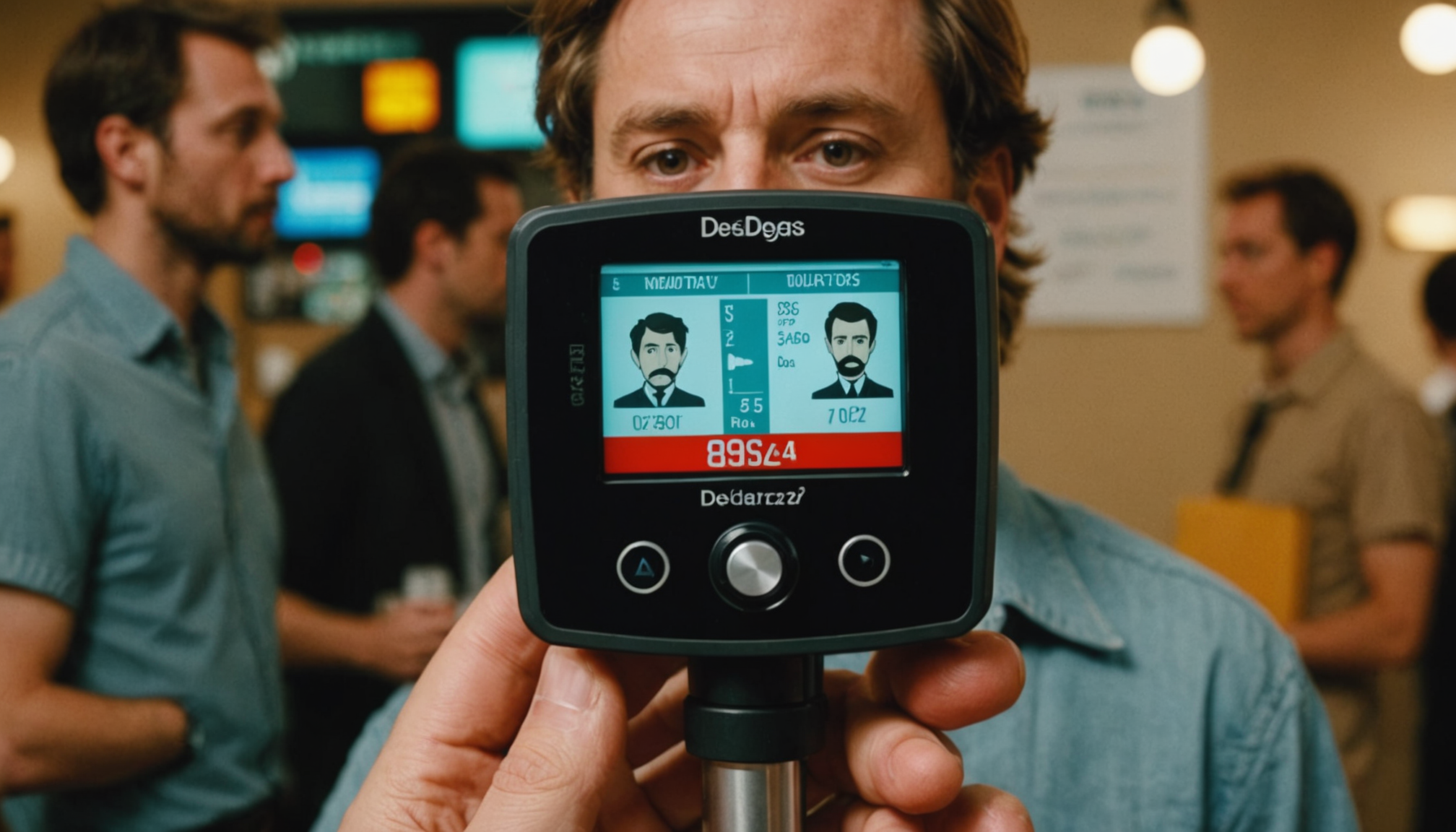
Innovative Breathalyzer Device for Disease Detection Aligned with Sustainable Development Goals
Introduction
Researchers at the University of Chicago have developed a novel breathalyzer-like device, the Airborne Biomarker Localization Engine (ABLE), designed to detect disease biomarkers in exhaled air. This innovation supports several Sustainable Development Goals (SDGs), particularly SDG 3 (Good Health and Well-being) and SDG 9 (Industry, Innovation, and Infrastructure), by aiming to simplify medical diagnostics and enhance health monitoring accessibility.
Device Overview and Functionality
ABLE operates by condensing airborne molecules from human breath into concentrated liquid droplets, which can then be analyzed using existing technologies such as simple test strips. This approach makes the platform highly accessible and cost-effective, promoting SDG 10 (Reduced Inequalities) by potentially providing affordable diagnostic tools globally.
- Exhaled air is drawn into the device via a pump.
- Water vapor is added through a humidifier.
- The mixture is cooled to induce condensation of volatile organic compounds (VOCs) into liquid droplets.
- Droplets are collected in a reservoir for subsequent testing.
The prototype measures approximately 10 by 20 centimeters and costs less than $200 to produce, enabling broad deployment in various healthcare settings.
Significance for Sustainable Development Goals
- SDG 3: Good Health and Well-being – ABLE offers a non-invasive, rapid diagnostic method that could improve early disease detection and patient outcomes.
- SDG 9: Industry, Innovation, and Infrastructure – The device exemplifies innovative technology development with potential for scalable manufacturing and integration into healthcare infrastructure.
- SDG 10: Reduced Inequalities – The low-cost and accessible nature of ABLE could reduce disparities in healthcare access, especially in low-resource environments.
- SDG 12: Responsible Consumption and Production – By utilizing simple test strips and minimizing the need for complex laboratory equipment, ABLE promotes sustainable consumption of medical resources.
Research and Validation
Initial tests demonstrated ABLE’s capability to detect glucose in human breath, correlating with blood sugar levels, and to identify inflammatory markers in “humanized” lab mice models. The device also successfully collected airborne pollen allergens and aerosolized E. coli, indicating potential applications in monitoring ambient air quality, which aligns with SDG 3 and SDG 11 (Sustainable Cities and Communities).
Challenges and Future Directions
- Comprehensive identification and cataloging of VOC biomarkers related to specific diseases remain necessary to enhance diagnostic accuracy.
- Further clinical validation is underway, including collaborations with medical professionals treating inflammatory bowel disease to identify breathborne inflammation markers.
- Efforts are ongoing to miniaturize ABLE into a wearable device, facilitating continuous health monitoring and supporting SDG 3 and SDG 9.
- Plans for commercialization aim to integrate ABLE into medical institutions worldwide, promoting equitable healthcare access and innovation dissemination.
Conclusion
The development of ABLE represents a significant advancement toward achieving sustainable healthcare solutions by enabling non-invasive, affordable, and rapid disease detection. This technology supports multiple Sustainable Development Goals by fostering innovation, improving health outcomes, and reducing inequalities in healthcare access globally.
1. Sustainable Development Goals (SDGs) Addressed or Connected
- SDG 3: Good Health and Well-being
- The article focuses on a new diagnostic technology (ABLE) that can detect diseases through breath analysis, aiming to improve health monitoring and medical diagnosis.
- SDG 9: Industry, Innovation and Infrastructure
- The development of the ABLE device represents innovation in medical technology and infrastructure for health diagnostics.
- SDG 10: Reduced Inequalities
- The device is described as low-cost and highly accessible, which could help reduce inequalities in healthcare access.
- SDG 12: Responsible Consumption and Production
- The device uses existing simple test strips and aims to provide a low-cost, accessible platform, potentially reducing waste and promoting sustainable production.
2. Specific Targets Under Those SDGs Identified
- SDG 3: Good Health and Well-being
- Target 3.3: By 2030, end the epidemics of AIDS, tuberculosis, malaria and neglected tropical diseases and combat hepatitis, water-borne diseases and other communicable diseases.
- Target 3.8: Achieve universal health coverage, including financial risk protection, access to quality essential health-care services and access to safe, effective, quality and affordable essential medicines and vaccines for all.
- Target 3.b: Support the research and development of vaccines and medicines for the communicable and non-communicable diseases that primarily affect developing countries.
- SDG 9: Industry, Innovation and Infrastructure
- Target 9.5: Enhance scientific research, upgrade the technological capabilities of industrial sectors, including health technology innovation.
- SDG 10: Reduced Inequalities
- Target 10.2: Empower and promote the social, economic and political inclusion of all, irrespective of age, sex, disability, race, ethnicity, origin, religion or economic or other status.
- SDG 12: Responsible Consumption and Production
- Target 12.5: Substantially reduce waste generation through prevention, reduction, recycling and reuse.
3. Indicators Mentioned or Implied to Measure Progress
- Health Diagnostic Accuracy and Accessibility
- Indicator related to the sensitivity and accuracy of the ABLE device in detecting disease biomarkers in breath (e.g., glucose levels correlated with blood sugar).
- Number of medical conditions detectable through non-invasive breath analysis.
- Cost per device and accessibility metrics (e.g., availability in medical institutions, affordability).
- Innovation and Technology Uptake
- Number of new diagnostic devices developed and commercialized.
- Research collaborations and clinical trials conducted using ABLE technology.
- Health Equity
- Reduction in inequalities in access to diagnostic tools, measured by availability in low-resource settings.
- Environmental Impact
- Use of low-cost, reusable or recyclable test strips and reduction in waste from diagnostic testing.
4. Table of SDGs, Targets, and Indicators
| SDGs | Targets | Indicators |
|---|---|---|
| SDG 3: Good Health and Well-being |
|
|
| SDG 9: Industry, Innovation and Infrastructure |
|
|
| SDG 10: Reduced Inequalities |
|
|
| SDG 12: Responsible Consumption and Production |
|
|
Source: livescience.com







